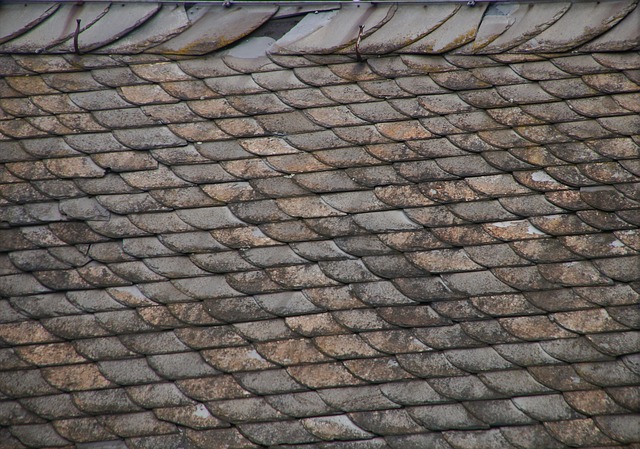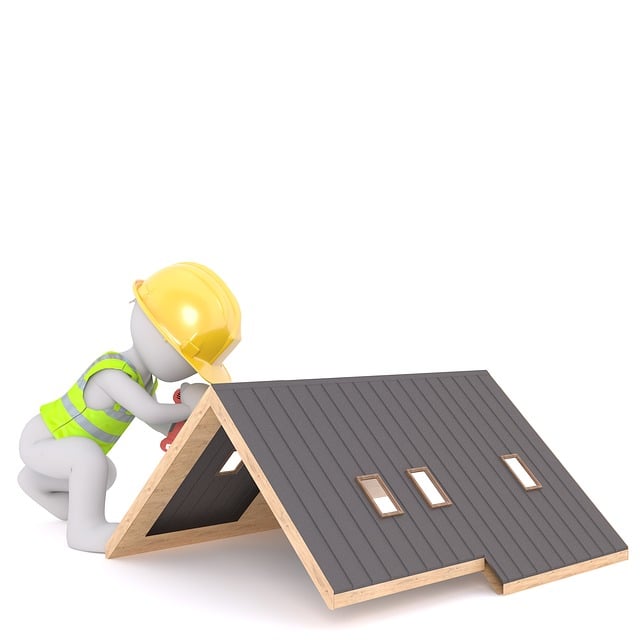After a storm, it's crucial to have a roofer conduct a thorough inspection to evaluate roof integrity. Skilled roofers can detect subtle signs of wear and damage that may elude untrained eyes, such as shingle cracks, granule loss, or leaks indicated by staining on exterior walls. These professionals assess the structural soundness of your roof to prevent water intrusion and further damage. Regular, professional inspections are key to maintaining a resilient home against weather elements, addressing vulnerabilities around flashing and extending your roof's lifespan. Roofers also provide critical services in storm recovery, conducting detailed assessments that facilitate prompt insurance claims resolution. Their expertise is essential for identifying immediate damage from wind or hail and foreseeing potential secondary issues, offering a comprehensive repair strategy to reinforce your roof's resilience against future storms. Engaging a roofer post-storm ensures early detection of damage, minimizing the risk of costly repairs and long-term structural problems. Regular assessments by competent roofers can save homeowners from extensive issues, maintaining the integrity and safety of their homes.
When a storm sweeps through or years pass, your roof’s integrity is at stake. This article serves as a comprehensive guide for assessing and addressing roof damage, whether from weather extremes or the relentless march of time. We delve into recognizing subtle to overt signs of distress, the significance of professional roofer evaluations, and the various types of storm-related damage. Learn how to conduct a thorough post-storm inspection, understand different roofing materials’ resilience, and discern when it’s time to call in expert assistance. This guide also covers maintaining your roof to enhance its lifespan, documenting damage for insurance claims, selecting the most suitable roofer for repairs, leveraging cutting-edge roofing technologies for added durability, and more. Real-world case studies illustrate common scenarios, while tips for future protection against storms cap off this essential resource for safeguarding your home’s uppermost defense.
- Recognizing Signs of Roof Damage
- The Role of Professional Roofers in Post-Storm Assessments
- Common Types of Storm-Related Roof Damage
- Long-Term Wear and Tear: What to Look For
- Step-by-Step Guide to Post-Storm Roof Inspection
Recognizing Signs of Roof Damage
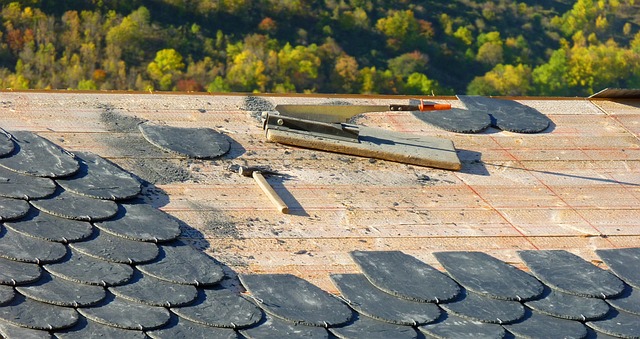
When assessing roof damage, it’s crucial to engage the services of a seasoned roofer who can provide an accurate evaluation following storms or as part of routine maintenance. A professional roofer possesses the expertise to identify subtle yet significant signs of wear that may not be immediately visible. These signs include cracked, curled, or missing shingles, which can compromise the integrity of your roof and lead to leaks. Additionally, a roofer will inspect for granule loss on asphalt shingles, as this indicates aging and can affect waterproofing capabilities. Gutters clogged with shingle granules are another red flag that warrants professional attention. Exterior wall staining or peeling paint may also signal leaks from the roof, necessitating a thorough inspection by a roofer. It’s important to address these issues promptly to prevent further damage and costly repairs down the line. A roofer can also assess the condition of flashing around vents, chimneys, and skylights, which are common points of vulnerability. By regularly scheduling roof inspections with a knowledgeable roofer, homeowners can ensure their property remains protected from the elements year-round.
The Role of Professional Roofers in Post-Storm Assessments
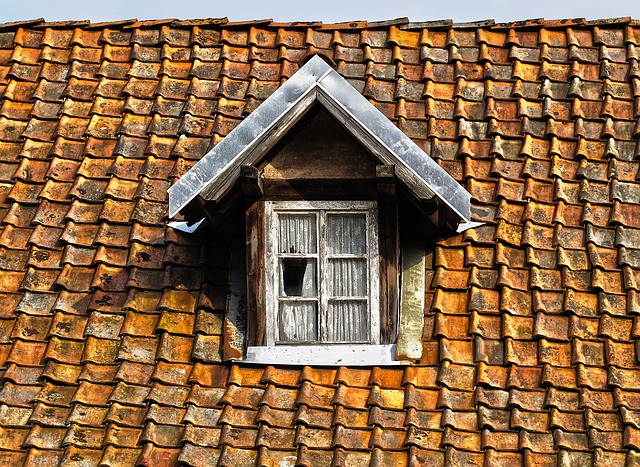
When storms wreak havoc on residential and commercial structures, the role of professional roofers becomes paramount in evaluating and addressing roof damage. These experts are equipped with the knowledge and tools necessary to conduct thorough post-storm assessments. Their expertise allows them to identify subtle and overt signs of damage that may not be visible to the untrained eye. From wind-driven debris to hail impact, professional roofers can pinpoint the exact nature of the damage, ensuring property owners receive accurate information about the extent of the repairs needed. This precise evaluation is crucial for timely and effective repair work, which in turn helps prevent further interior damage and costly future repairs.
Moreover, professional roofers offer a critical service in the aftermath of storms by providing prompt assessments that enable insurance claims to be processed efficiently. Their detailed reports can serve as documentation for insurers, facilitating a smoother claims process and reducing the potential for disputes over covered damages. With their experienced eyes, these roofing professionals can also anticipate potential secondary issues that might arise from the initial damage, providing property owners with a comprehensive approach to roof repair and maintenance. This proactive stance not only ensures structural integrity but also adds longevity to the roof’s lifespan, safeguarding against future storms or the inevitable wear and tear over time.
Common Types of Storm-Related Roof Damage
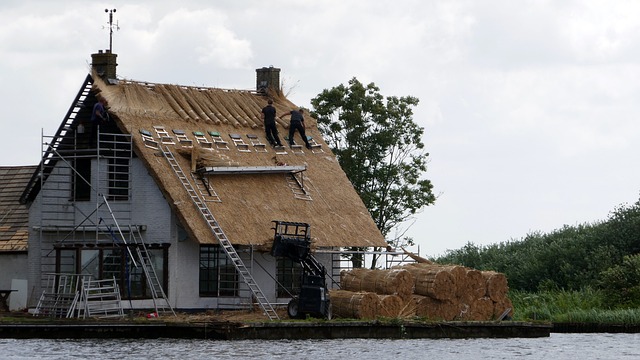
When assessing roof damage post-storm, homeowners and professionals alike must be vigilant for a variety of issues that can arise. High winds can lift shingles or tiles, causing them to crack, curl, or even detach entirely. This not only compromises the waterproof seal but also leaves the underlying materials susceptible to leaks. Missing granules on asphalt shingles, often a result of hail impact, can expedite the deterioration of the shingles and expose the roof’s surface to the elements, leading to further damage over time. In areas where storms are common, it’s crucial for property owners to engage with experienced roofer professionals who can inspect the integrity of the roof and perform necessary repairs or reinforcements to safeguard against future storms. Additionally, fallen trees or branches can cause significant structural damage, from puncturing the roofing material to splitting rafters or trusses, which requires immediate attention to prevent additional compromise to the building’s overall structure. A proactive approach to maintenance and a prompt response to any suspected damage after a storm are essential in preserving the longevity and security of a home’s roof system. Regular inspections by qualified roofers can help identify potential vulnerabilities before they become costly repairs, ensuring that the roof stands up to the test of time and adverse weather conditions.
Long-Term Wear and Tear: What to Look For

When evaluating roof damage from storms or the inevitable long-term wear and tear, homeowners should be vigilant in identifying issues that could compromise the integrity of their roofing system. Over time, exposure to elements like wind, rain, and UV rays can lead to various forms of deterioration. A qualified roofer is pivotal in conducting regular inspections, as they possess the expertise to spot subtle signs of degradation that might elude an untrained eye. Shingles may show granule loss, cracking, or curling, which can indicate aging and a potential need for repairs or replacement. Gutters clogged with debris can retain water, causing rot in the fascia boards, while flashing around chimneys and vents should be inspected for any signs of rust or gaps that could allow leaks. Skylights and vent boots are also susceptible to wear, potentially leading to leaks if not properly maintained. Homeowners should be aware of these indicators and consider enlisting a roofer’s services for a thorough assessment. This proactive approach can prevent minor issues from escalating into costly repairs or even structural damage to the home. Regular maintenance by a skilled roofer is key to ensuring the longevity and safety of your residence.
Step-by-Step Guide to Post-Storm Roof Inspection
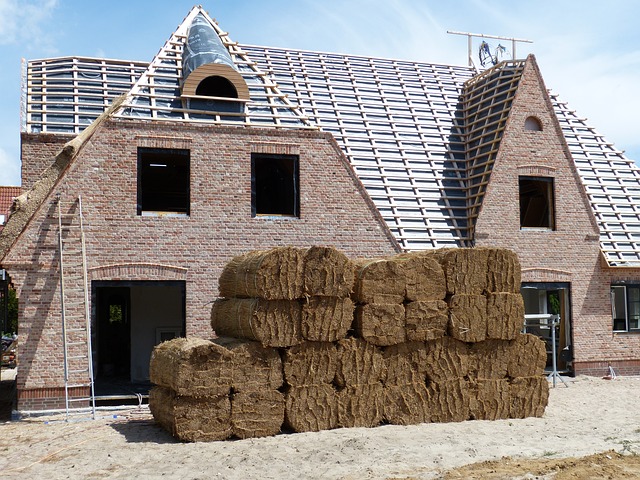
When storms sweep through, their potent winds and torrential rains can inflict significant damage on a roof’s structure. Homeowners should be vigilant and enlist the expertise of a roofer to conduct a thorough post-storm inspection. A professional roofer will begin by carefully surveying the entire roof for any obvious signs of wear or damage. This includes inspecting shingles, tiles, or other covering materials for any that are missing, cracked, or curled, which could indicate storm damage. The roofer will then scrutinize the gutters and downspouts to ensure they are securely attached and free of blockages caused by debris, as these components play a crucial role in channeling water away from the home.
Following this initial assessment, the roofer will proceed to check for less conspicuous issues, such as leaks or compromised flashing around vents, chimneys, and skylights. Utilizing tools like binoculars for a closer look and a walkaround for a ground-level examination of hard-to-reach areas, the roofer will identify any subtle irregularities that could lead to future problems. This meticulous process is designed to pinpoint the extent of the damage so that repairs can be carried out promptly and effectively, safeguarding your home from further water intrusion and structural deterioration. It’s advisable to document all findings with photographs for insurance purposes and to discuss with the roofer the necessary steps for repair or replacement, ensuring your roof remains sturdy and protective against the elements.
When a storm passes or years unfold, your roof’s integrity can be tested. Understanding the signs of roof damage and the common wear patterns is crucial for timely repairs or replacements, ensuring the safety and longevity of your home. In this article, we’ve explored how to recognize potential issues, the importance of professional roofer involvement in post-storm evaluations, and the various types of storm-related damage. Additionally, we’ve outlined the key aspects of long-term wear and tear to watch for and provided a comprehensive guide for conducting a post-storm roof inspection. Whether you’re dealing with the aftermath of severe weather or addressing the gradual effects of time, the guidance offered in this article serves as a valuable resource for maintaining your roof effectively.

